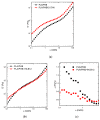PLA/PHB Blends: Biocompatibilizer Effects
- PMID: 31466402
- PMCID: PMC6780201
- DOI: 10.3390/polym11091416
PLA/PHB Blends: Biocompatibilizer Effects
Abstract
The purpose of this work was to formulate a fully bio-based blend with superior properties, based on two immiscible polymers: polylactic acid (PLA) and poly-hydroxy butyrate (PHB). To improve the miscibility between the polymeric phases, two different kinds of compatibilizers with a different chemical structure were used, namely, an ethylene oxide/propylene oxide block copolymer in the form of flakes and a mixture of two liquid surfactants with a variable lipophilic-hydrophilic index. The morphology of the blends and their thermal, mechanical, and rheological behavior were evaluated, aiming at assessing the influence of the selected compatibilizers on the microstructure and final properties of the systems. Morphological analyses of the compatibilized blends indicated that the liquid surfactant is more effective than the solid copolymer in inducing morphology refinement, as also suggested by results coming from rheological measurements. Furthermore, thermal analyses demonstrated that the presence of both kinds of compatibilizers induced an enhancement of the crystallinity content of blends. Finally, a remarkable increase of the elastic modulus values was obtained for the compatibilized blends as compared to the pure counterparts, with a consequent significant enhancement of the HDT values.
Keywords: HDT; PHB; PLA; natural additives; polymer blends.
Conflict of interest statement
The authors declare no conflict of interest.
Figures






References
-
- Rhim J.W., Park H.M., Ha C.S. Bio-nanocomposites for food packaging applications. Prog. Polym. Sci. 2013;38:1629–1652.
-
- Bastioli C. Handbook of Biodegradable Polymers. iSmithers Rapra Publishing; Shawbury, UK: 2005.
-
- Aslan S., Calndrelli L., Laurenzio P., Maliconico M., Migliaresi C. Poly (D, L-lactic acid)/poly (∈-caprolactone) blend membranes: Preparation and morphological characterisation. J. Mater. Sci. 2000;35:1615–1622.
-
- Maiti P., Yamada K., Okamoto M., Ueda K., Okamoto K. New polylactide/layered silicate nanocomposites: Role of organoclays. Chem. Mater. 2002;14:4654–4661.
LinkOut - more resources
Full Text Sources

